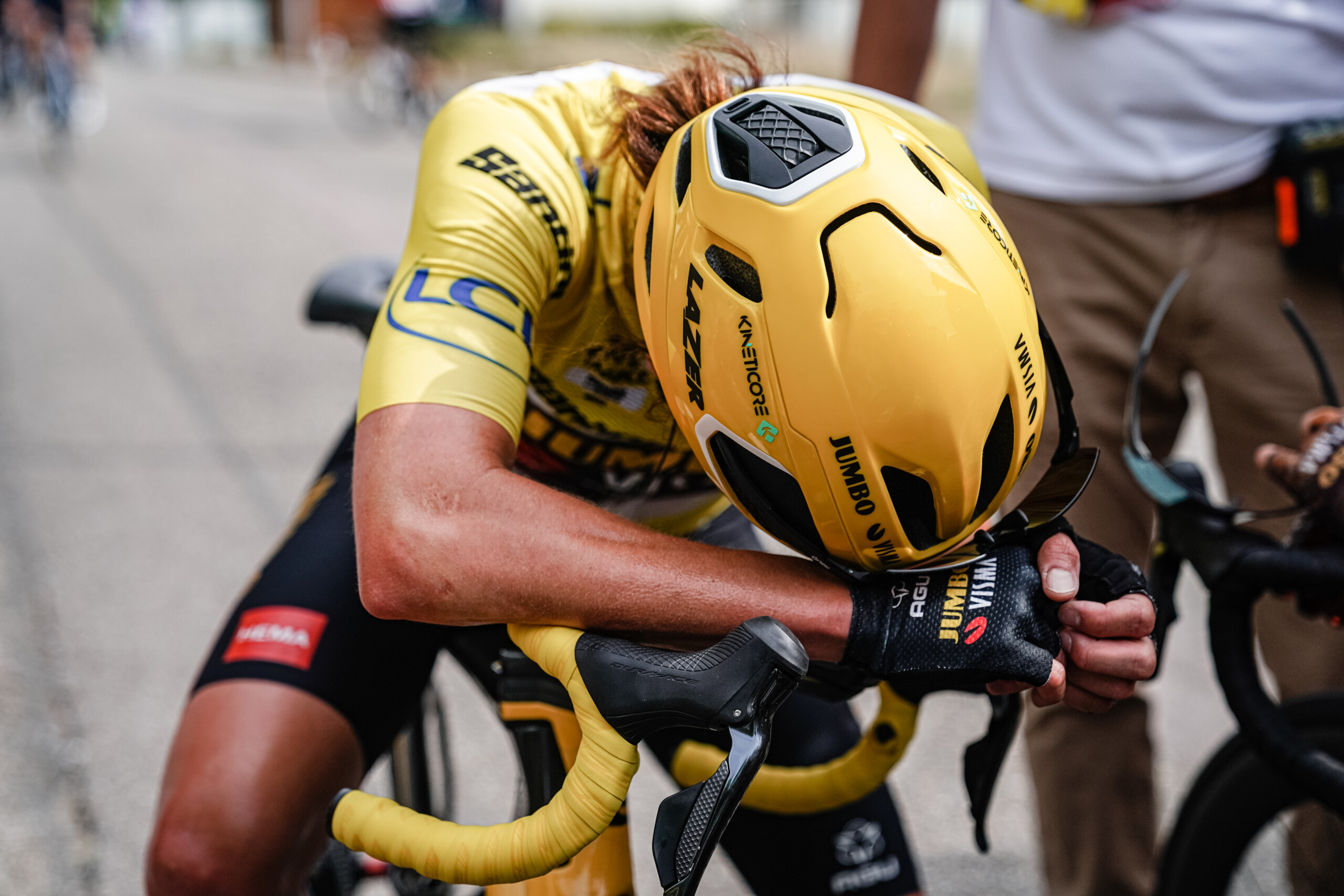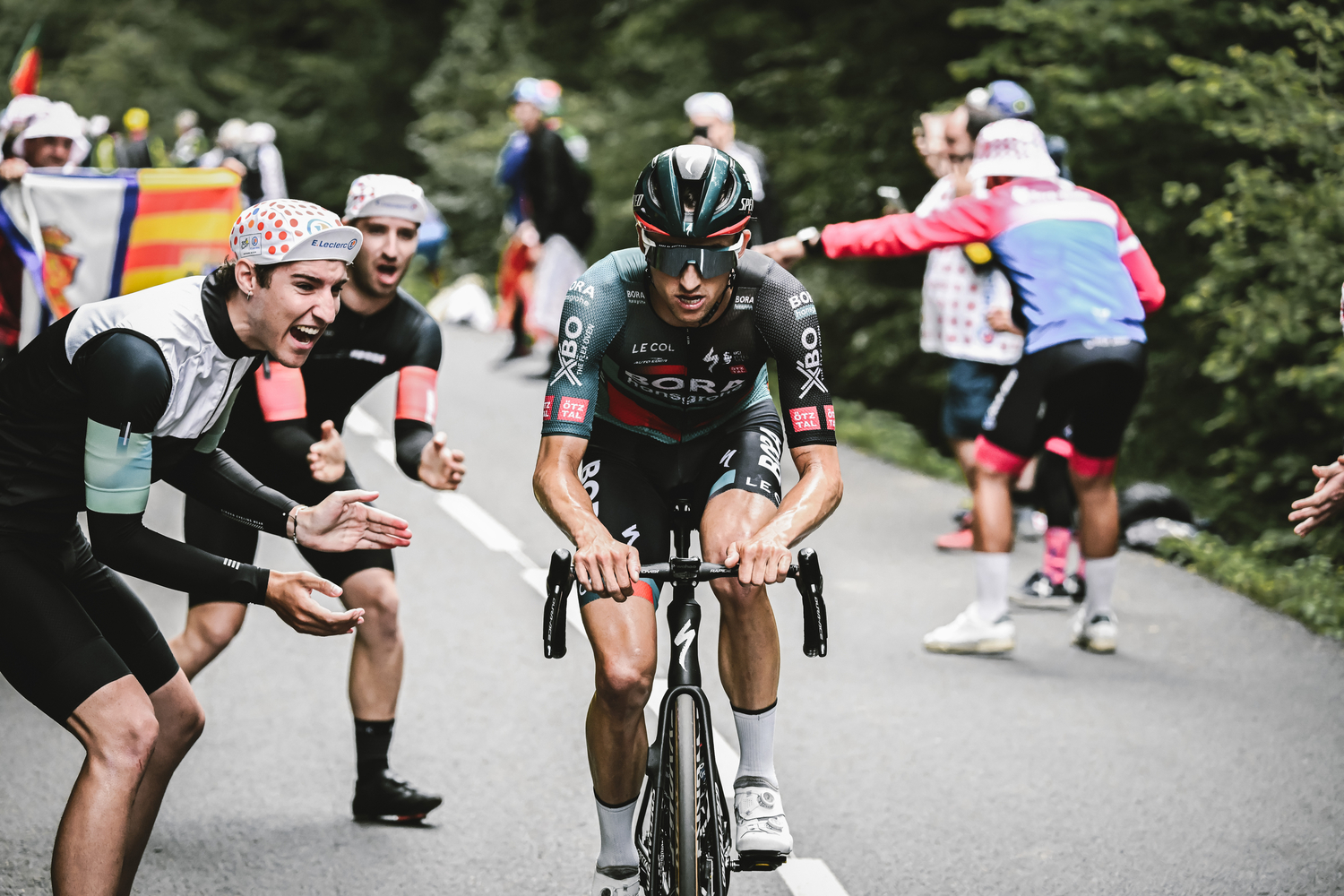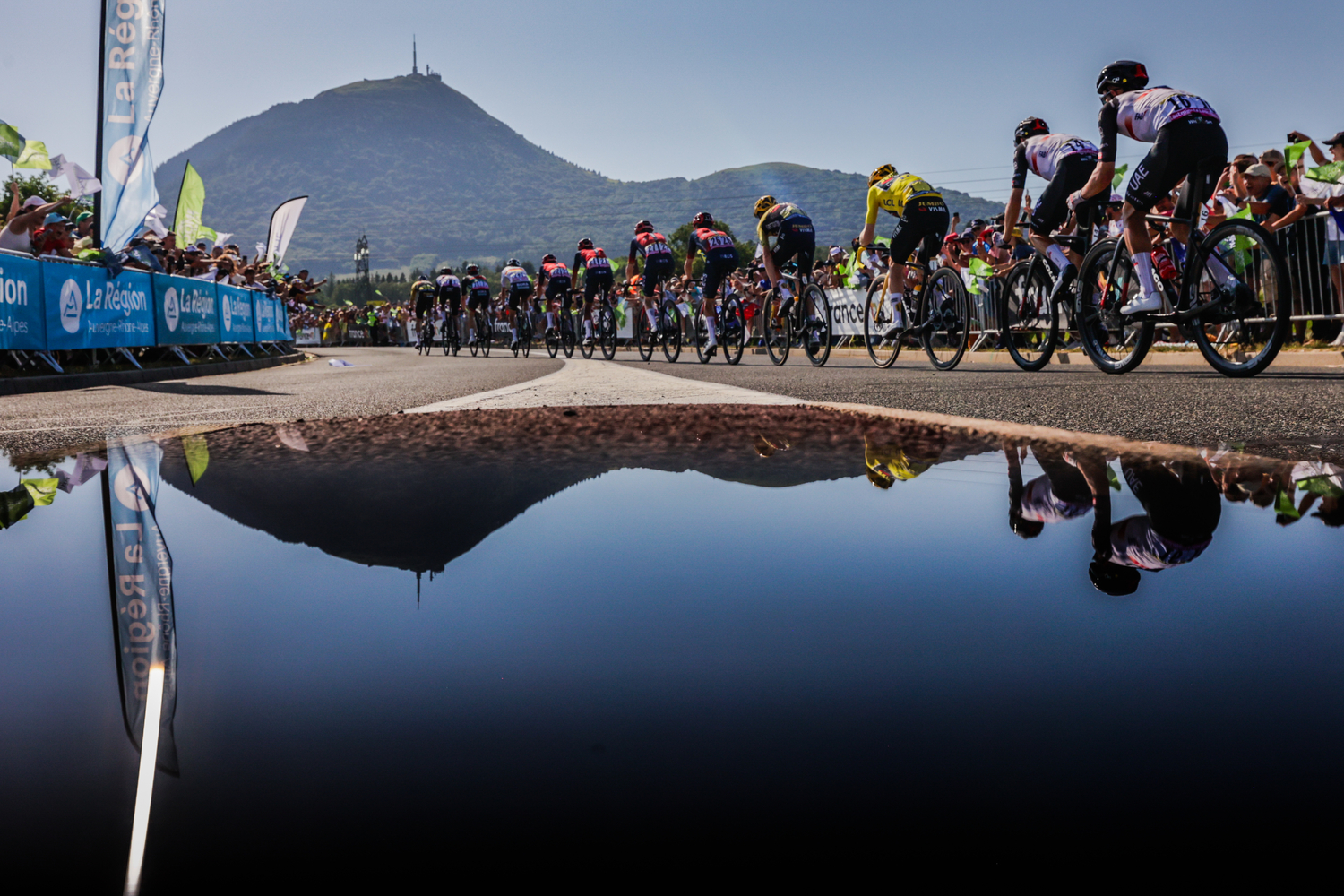By Madeleine Orr, (July 27, 2022), Loughborough University — As the men’s 2022 Tour de France wraps up and the women’s race begins, the European heat wave rages on. If you look closely, the heat can be seen in photos of the event: cooling towels around racers’ necks, water splashed over red faces, ice packs sticking out from under race jerseys.
Compounding the temperatures is the heat island effect created by roads which absorb and radiate heat. On the hottest days of the men’s race, with temperatures nearing 40℃, organisers even watered some of the roads to lower the surface temperature. And while this works, it also adds to the humidity – solving one problem but contributing to another. It also doesn’t account for the environmental implications of using that much water to hose down a road.
https://twitter.com/LeTour/status/1546857618207129601?s=20
The heatwave comes as no surprise to those who follow cycling. Mudslides, extreme heat, hail and a surprising amount of snow have interrupted stages of the Tour in recent years.
In 2019, for instance, a severe mudslide covered the whole road in stage 19 of the race, forcing the race to stop. Since athletes had no idea what was ahead of them, they spent several hours toiling on the course that day until the race director stopped the race and called in bulldozers to clear the debris.
The Union Cycliste Internationale (UCI) has an extreme weather protocol to guide race organisers in their response to such weather events. The policy calls for the convening of a meeting between the race doctor, chief of security, representatives for riders and teams, and representatives from the UCI when extreme weather conditions are anticipated prior to the start of a stage. No policy exists for inclement weather that crops up when a race is already in motion.
Conspicuously absent from the policy is any regard for whether the policy could be activated by specific thresholds for wet-bulb globe temperature – a measure which includes temperature, humidity and wind speed, and which is taken in direct sunlight and so closely matches how hot it actually feels for the cyclists. It’s left up to the named stakeholders to determine what constitutes “extreme weather” and the lines on this are blurry.
The policy is also limited in the actions it permits for combating inclement conditions. These include:
- take no action
- change the location or time of the start or finish
- change the course or neutralisation of a section of the stage/race
- reinforce safety arrangements for the course and organisation
- any other corrective measure or action adopted by the stakeholders in compliance with the UCI Regulations
- cancel the stage/race.
Historically the UCI has acted on its extreme weather protocol to address snow or extreme cold, not heat. For example, the 2016 Tour De Suisse saw the final stage shortened to just 57.3km due to snowy conditions.

But as the peloton raced across the finish line at Champs-Elysées on Sunday, temperatures hovered around 30℃, five degrees warmer than average Parisian temperatures in July, offering a final glimpse of the race under increasingly common strenuous conditions.
Heatwave hotspot
France sits in the middle of a western European region which has emerged as a heatwave hotspot, with the number of heatwaves increasing roughly three-to-four times faster compared to the rest of the northern mid-latitudes over the past four decades. The heat has caused health concerns for athletes. This year, Alexis Vuillermoz collapsed at the finish line of the ninth stage, was taken to hospital to treat heat illness, and later pulled out of the Tour.
The heat also brings a suite of indirect impacts like drought and wildfires along the route. This summer, France has seen some of the worst wildfires in its history, burning more than 41,000 hectares and requiring the evacuations of more than 36,000 people. It’s a stroke of luck that the Tour escaped the flames.
Though riders came within 100km of the blaze as they rode through one affected region, Gironde, the route didn’t go through any town that was evacuated and no changes were needed. But timing is everything: Villandraut, which was on the 2021 route, was evacuated during this year’s race.
Ironically, this year’s race was only disrupted by climate protesters who chained themselves together to block the roads in two stages. But if climate trends continue apace, it’s only a matter of time before larger structural changes will be needed to safely host this event. Specifically, the Tour may not be tenable in July anymore, which doesn’t bode well for other summer events in France, namely the Paris 2024 Olympic Games.![]()
Madeleine Orr, Lecturer in Sport Business and Program Director for Sustainable Sport Business, Loughborough University
This article is republished from The Conversation under a Creative Commons license. Read the original article.












